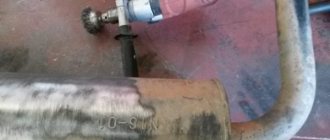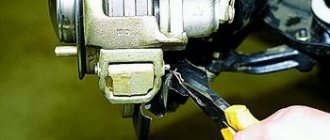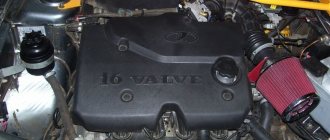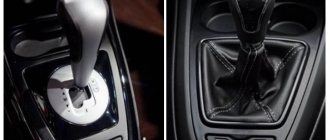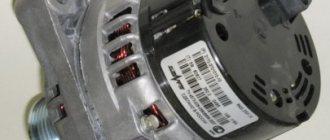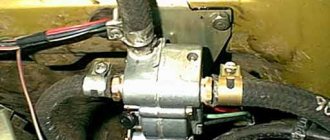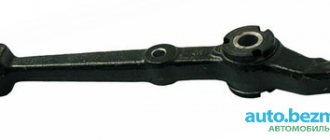Most of the used cars are real rubbish, the problem is in the bodies and their characteristics. Damaged and restored cars are often found - it is not safe to buy these. But how can a beginner recognize a damaged car? You can recognize it, you just need to know what thickness of paint should be on cars.
The fact is that it is very difficult to paint a restored car with a factory paint layer thickness - it is expensive, and not every reseller will paint it perfectly. It is much easier and cheaper to paint it somehow, but beautifully, and hiding all the imperfections. And under the layer of paint there may be a weld that is not factory (often a car is assembled from two or more parts). Under the layer of putty and paint there may be holes and rotten metal.
Knowing how thick the paint on cars usually is, you can recognize a painted car, which means that it was definitely involved in an accident.
How to determine the thickness of paint on a car?
A simple device - a thickness gauge - will help you check your car for paint thickness. This is relatively new equipment that will help you avoid making a mistake when buying a car. It is not at all uncommon for such cases when a beginner chooses a beautifully painted car, and then it turns out that it was restored after a terrible accident literally from scrap metal, the geometry of the body is broken, and there are also other flaws.
A thickness gauge can be purchased at any auto store - the prices for these devices are quite affordable. Let's see how to use this device:
- First of all, the thickness gauge is turned on and applied to the surface being examined - the device will make a certain sound and numbers will appear on the digital screen. This is the thickness of the coating in microns.
- When the paint thickness has been measured, you should compare the result with the factory values. The factory thickness is indicated in special tables - the thickness table is on the Internet, it can be easily found. On average, the paint layer on a car is from 70 to 150 microns - this result is acceptable.
On the working surface of the thickness gauge there is a special sensor that generates waves, and they, in turn, are reflected from the surface of the body. This is how the device picks up signals and converts them into numbers.
When comparing the measurement result with the table, it is worth remembering that the numbers may fluctuate within 10 microns in any area of the body - this is normal. Even at the factory the paint job is not perfect. Paint can have different densities. Anything more is a sign of renovation. On restored surfaces, the paintwork can reach 200 microns or more.
It is also worth remembering that the thickness gauge measures the thickness of the coating with putty and primer. If high values are obtained, repaired areas on the body can be identified.
On video: how to use a thickness gauge.
Work principles. Types of devices.
Based on the principle of operation that the device uses to measure paint thickness, this product can be divided into 2 groups:
- ultrasonic paint density meters (work using the pulse-echo method) - used to measure the thickness of metal products and elements;
- eddy current thickness gauges (the work uses eddy current parametric and pulse induction principles for extracting information) - allow you to determine the density of galvanic, plastic, paint, synthetic or any other dielectric external coating.
Devices such as model ET 11P (S), ET 12 and CHY 115 use the eddy current principle of measurement during operation. The listed models measure the thickness of the coating on all surfaces made of metal.
And, models such as “CHY 113” and “ET 10” perform their function by using the principle of magnetic induction and measure only iron-containing metals.
Which parts should you check first?
Experts recommend starting from the roof surface - this element is least susceptible to various damages. The roof is tinted very rarely and it is the standard and guideline for all other measurements. The average for the roof will always be lower than for all other parts.
Next, measure the racks - their upper parts can be used as a guide. The front and rear of the body are areas that are very often repaired. You should also pay attention to the front doors and sills. Then measurements are taken in all other external segments.
Don't forget about the internal cavities - the space under the hood, trunk, interior, gas tank hatch.
First of all, measure the parts separately. Suspicious areas are measured 4-5 times - in the center and along the edges. The differences should not be more than 35 microns. Then the arithmetic average is calculated and the total thickness of the paint layer for the entire car is determined.
Stages of body painting in a workshop
Complete body painting in a workshop requires a lot of time and money. It is necessary in case of severe damage to the paintwork or when the color changes. It is much more common to carry out local painting of any damaged elements.
Body painting in a workshop
- The first stage involves surface preparation. All unnecessary parts are removed from the body (handles, linings, decorative panels, etc.). Damaged areas are pulled out, the surface is cleaned and degreased.
- The next stage is called preparation. Traces of corrosion are removed from the surface, treated with zinc phosphate or passive soils. The surface is sanded, primer and putty are applied to the damaged areas. It is the preparatory stage that takes the most time and effort.
- At the last stage, the paint coating is applied using a spray gun. The master applies the paint in several layers, allowing it to dry. Then the surface is varnished and polished. The varnish protects the paint from moisture, ultraviolet radiation and minor scratches.
Which paint thickness gauge should I use?
Now you can buy a great variety of devices that differ in operating principle and price: ultrasonic, magnetic, electromagnetic, eddy current. The Internet will tell you that magnetic is the simplest and most inaccurate, and eddy current is the most reliable and accurate, but “does not see” painted plastic surfaces, and so on. The main thing to understand is that it doesn’t matter which thickness gauge you use.
“Any of them is capable of showing a deviation of 50-100 microns, and this is quite enough to understand what was done to the car,” Evgeniy Gulevich .
How to calibrate a thickness gauge
To give accurate results, the thickness gauge must be calibrated. Calibration gets lost due to temperature changes or if the battery runs out.
To calibrate the thickness gauge, metal plates are used, which are sold with it. If you rent an instrument, ask the owner to calibrate it in front of you and provide you with rental calibration plates just in case.
The calibration plates look like this:
My thickness gauge has two gauge plates because it works on both steel and aluminum parts. The device must be calibrated separately for steel and aluminum. If the thickness gauge only works on one metal, there will be one plate.
The kit usually includes a special calibration film, which is used for adjustment.
The calibration process is simple - place the thickness gauge on the plate and reset the readings to zero:
We apply the calibration film to the plate and place the device on top:
The thickness gauge should show the numbers printed on the film. If this does not happen, repeat the procedure.

